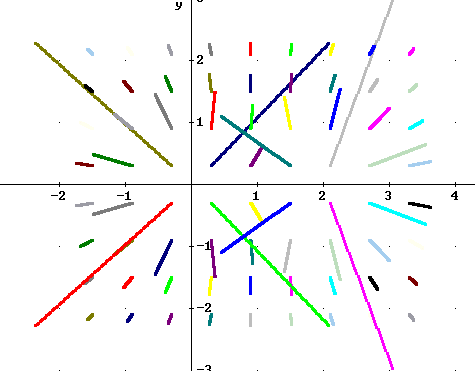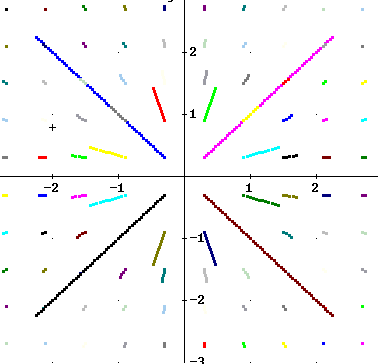
The electrostatic field surrounding a single fixed charge is at every point equal to the force per unit charge experienced by a test charge placed at that point.
We recall that the force exerted by two charges on one another has a magnitude inversely proportional to the square of the distance between the charges, so that for example a doubling of the separation of the charges results in 1/4 of the force. We recall also that the force is repulsive if the charges are of like sign, attractive if the charges are of unlike sign.
In the figure below we assume a positive point charge at the origin, and we imagine placing a positive unit charge at a variety of different points. At each point we sketch a vector representing the magnitude and direction of the force on the charge.
The resulting field is depicted below. It is understood that each line is in fact a vector pointing away from the origin, with the vector representing the field at its initial point.

The figure below similarly represents a positive point charge at the point (2, 0). We assume the charge to be equal to the charge in the preceding figure.
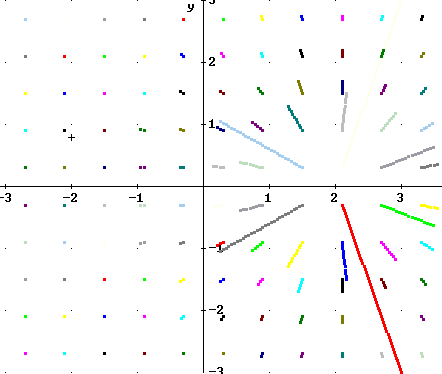
The next figure combines the fields created by the two charges. You should see that at every point two vectors are indicated, one representing the field due to the first charge and the other the field due to the second.
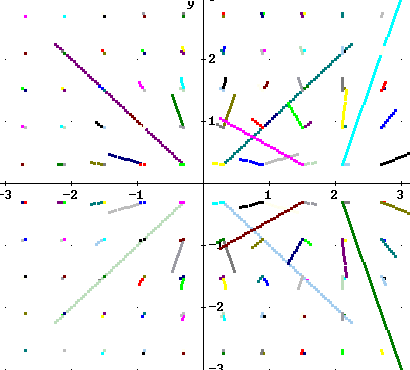
The next figure depicts at each point both of the vectors from the preceding, and also the resultant of the two vectors. Be sure you see at every point the vector which is directed away from the first charge, the vector directed away from the second, and the resultant of the two.
At every point observe also at how the relative magnitudes of the vectors directed away from the two charges are affected by distances from those charges. Look for points at which the forces are nearly equal in magnitude: where do those points occur? Look also for point where the force from one charge is much greater than the force from the other; see where these points lie and how the resultant is affected.
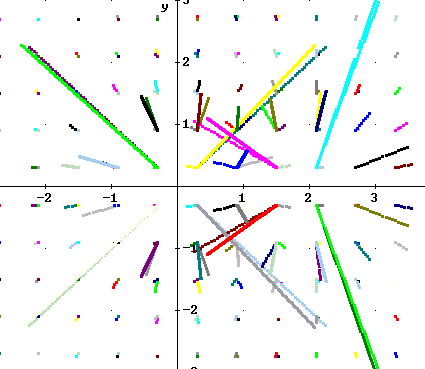
The figure below shows the resultant vectors only. Note how for points near one charge or the other the field is only slightly different from the field of that charge alone, while the field at points which are more or less equally distant from the two charges does not much resemble the field of either charge by itself.
